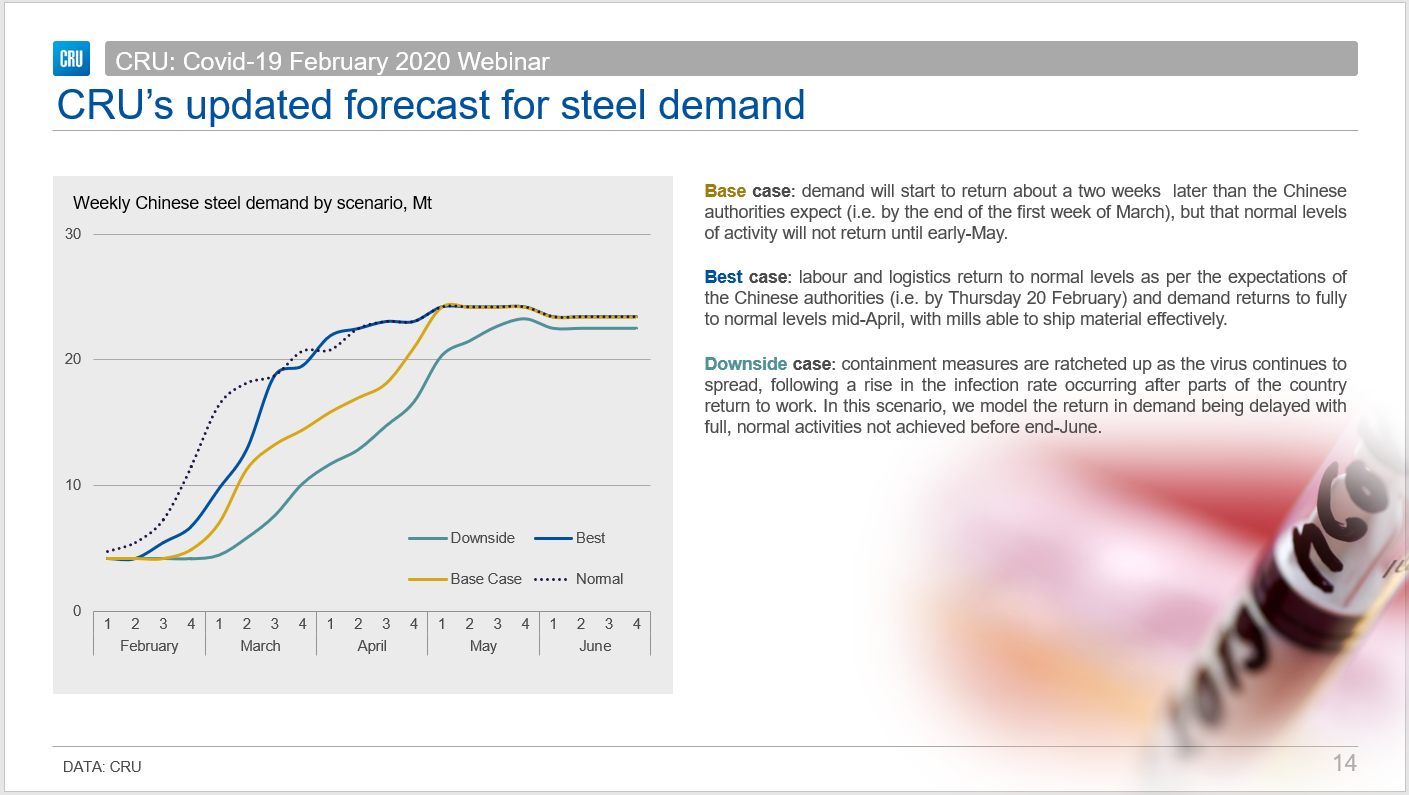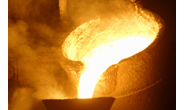International Steel Mills

CRU Webinar: Coronavirus—Impact on Global Steel and Raw Materials Markets
Written by Tim Triplett
March 1, 2020
Gauging how COVID-19 will impact global commerce, specifically the world’s steel industry, is almost as difficult to predict as the spread of the virus itself. CRU analysts will tackle the subject in a new webinar this week.
As CRU Senior Analyst Erik Hedborg reports, the news is not all bad. For one, the pace of new infections is starting to slow. While infections grew at a double-digit rate in the early days of the epidemic, the current daily growth rate is just 1 percent as the total nears 80,000 worldwide. Two, the number who have already survived the virus is nearing 20,000. “Nearly 20 percent of all the infected people have completely recovered from the virus,” he said. And three, while the virus has spread outside of China, the number of cases remains low at just over 1,000 as of this past week.
The virus is believed to have originated in Hubei province, an important transportation hub and home to some 60 million Chinese. Hubei is China’s sixth largest steelmaking province. Since January, curfews and transportation restrictions have disrupted commerce as the Chinese government has attempted to prevent the spread of the virus from one worker to another.
How has the steel market reacted? “Since the end of the Chinese New Year on Feb. 3, both rebar and HRC prices have fallen quite sharply,” reports CRU Analyst Irina Melkonyan. CRU estimates the current Chinese HRC price has declined to nearly 3,500 rmb per ton (roughly $500 U.S.). It could go as low as 3,050 rmb ($436 U.S.) by April before beginning to rebound.
Behind the plummeting prices is weak steel demand as the virus has slowed Chinese manufacturing and construction. Steel inventories have also built up to alarming levels at both mills and trading companies, say the CRU analysts. Some EAF production has been curtailed, but the nation’s many blast furnaces, which are not so easy to dial back, have continued to produce steel. “Our contacts in China report that some mills have actually run out of space to store their products. They no longer have anywhere to put their rebar or billet,” adds Melkonyan. Transportation restrictions continue to make it difficult to ship the excess to customers or traders.
CRU envisions three possible scenarios for how the situation could play out. In the best case, the epidemic could end rapidly and business could normalize by the first part of March. In the worst case, disruptions will continue to plague commerce until late May. CRU’s base case, the one considered most likely, calls for demand to return to normal by late April (see chart).

CRU analysts also will explore the impact of the virus on iron ore and coal prices. Join CRU’s steel experts for the latest webinar covering the impact of the coronavirus on global steel and steel raw materials markets. The webinar focuses on Asia, while other markets will continue to be covered in additional insights and webinars.
Date: Wednesday, March 4, 2020
Times: Session I: 9:00 – 9:30 AM GMT
Session II: 3:00 – 3:30 PM GMT (10:00 AM EST)
For additional details about the agenda and to register, please follow the link below:
The webinar provides a glimpse at the analysis provided in CRU’s Global Steel Trade service.
Enquire about this service here.

Tim Triplett
Read more from Tim TriplettLatest in International Steel Mills

Global steel mill output steady through May
Global raw steel production rose 2% from April to May, slightly above average production levels seen in recent months, according to data recently released by the World Steel Association (worldsteel).

Trump says US government to control 51% share in USS
President Trump says the US government will hold a 51% stake in U.S. Steel after the Nippon deal.

USS, Nippon Steel quiet as litigation deadline approaches
There has been little word from U.S. Steel, Nippon Steel, or the White House since President Trump endorsed the companies’ “partnership” on social media and celebrated it at the May 30 rally outside Pittsburgh.

Ternium’s Vedoya named AIST’s Steelmaker of the Year
Maximo Vedoya was awarded in recognition of Ternium’s expansion project in Pesquería, Mexico, and Ternium’s efforts to decarbonize steelmaking.

CRU: Baosteel hints at output cuts in China
Baosteel exec comments on market rumors of 50 million tons of output being cut this year, less than 0.5% of the 1 billion tons-plus China has produced annually in recent years.
